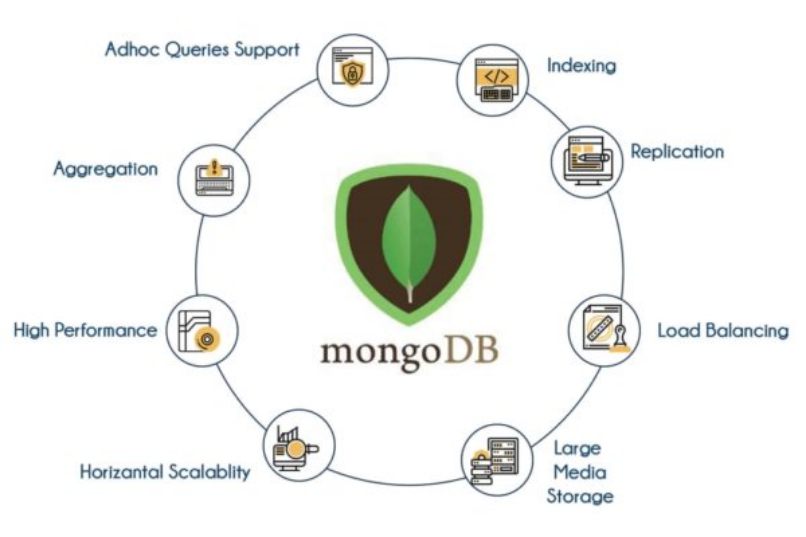Complete List of Simple, Advanced and Subqueries You Can Perform with MongoDB
–
A No-SQL database is where table structure is not fixed, unlike structured SQL databases. ¿How to Consult the Guides MongoDB?
One of the things that you should know and that is very important if you are in the programming world is how you can develop CRUD operations for MongoDB in PHP, something that is quite useful, since CRUDS are widely used.
Subqueries that you can perform with MongoDB in a simple way
Classified as a No-SQL database, MongoDB is a document-based database that stores the data in the form of JSON documents with an autogenerated identified for each document.
MongoDB stores the data in the form of cadena JSON regardless of the number of attributes or the name of the attributes in a specific column.
This allows developers to quickly make changes to entities without the need to make changes to the database level.
If you would like to establish a connection from PHP to MongoDB, you can do it quite easily, you just have to follow a step by step with examples, which will help you with everything so that you can make the MongoDB connection PHP child.
You can know which is the list of simple, advanced and subqueries.
- Installation by MongoDB
- The MongoDB download center provides a package executable .msi to install MongoDB on Windows. You can download MongoDB from the official site.
- Installation in Windows is quite straightforward and can be done using a few commands once it has been done. downloaded the configuration.
- Run the following commands to install MongoDB on Windows PC / server:
> cd /setup-folder/ > msiexec.exe /q /i .msi ^ INSTALLLOCATION="C:Program FilesMongoDB" ^ ADDLOCAL="MonitoringTools,ImportExportTools,MiscellaneousTools"
- The above commands will take you to directory and run the setup for installation in the specified location.
- Once installed, you need to configure the storage path of the default database for MongoDB.
- The following command helps you configure the same: > md dbdata
- The above command creates a db / data folder in the directory pointed to by the symbol of the system actually.
- In case you need to re configure the database.
- You can use mongod.exe with the dbpath argument as shown below:> “C: Program Files MongoDB bin mongod.exe” – dbpath d: tutorial mongodb data
In this way you can consult the MongoDB collection document

- The method find (): To query the data from the MongoDB collection, you must use the MongoDB find () method.
Syntax - The basic syntax of the find () method is the following:> db.COLLECTION_NAME.find ()
- The find () method will display all the documents as unstructured.
- Apart from find () method, there is the findOne () method, which returns only one document.
- The pretty () method
- To display the results in a formatted way, you can use the pretty () method.
- Sintaxis: > db.mycol.find (). pretty ()
- Using findAndModify: And we finish the query commands with one that has a different behavior.
- Many times we find ourselves in the need to look for a document to modify some of its fields and then return it to process it in the app.
- We can do this atomically with findAndModify.
This command receives the following parameters: - Query: The search criteria.
- The filter that says which documents should be searched. Same as in find and in findOne.
- Even though the query returns multiple documents, only one of them will be modified
- Sort: we can specify an order to have control over the document that will be modified in case multiple results are returned.
- Remove: field boolean.
- This parameter is not required if the parameter is added Update (see next point).
- If he value is true, the found document will be deleted.
- Update: this parameter is not required if the parameter is added Remove (see previous point).
- In this field we must enter a JSON with the update statement.
- New: Boolean field.
- If true, the document already modified is returned, if it is false the original is returned.
- Fields: projection with the data we want to return.
- Upsert: if true and the query does not find documents, an new document.
- In another case, will update the document.
If you would like to know more about this topic, you could follow a tutorial that is also specialized in how you can do advanced, nested and complex queries in MongoDB with some key commands that you should know.
We hope you liked this tutorial and that the list that we show you has been able to help you with some questions that you needed to know, and you also have some tips or tricks that you can perform with MongoDB and that perhaps you did not know that they could be done.
If you have any and would like us to solve them through a tutorial, you can leave it in the comments and we will gladly answer it in the best way.















